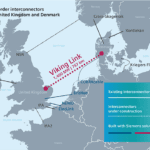- Two back-to-back links with a transmission capacity of 500 MW each ensure a reliable electricity supply of Bangladesh’s population and growing economy
- HVDC Classic technology helps stabilize the connected systems in the event of grid disturbances
- The high capacity power link helps to avoid transmission bottlenecks
In June 2018, Siemens has fully commissioned the second block of the high-voltage direct-current (HVDC) back-to-back link in Bheramara, Bangladesh, to connect the electricity supply networks of India and Bangladesh with a transmission capacity of up to 500 Megawatts (MW). Block 1 is in operation since 2013 and offers a transmission capacity of up to 500 MW. With block 1 & 2 operating in parallel the Bheramara HVDC back-to-back link has a capacity of up to 1000 MW – the highest reliable power capacity in Bangladesh. On July 27th, 2018, the trial run was successfully completed; however, Block 2 has been put into commercial operation since July 2nd, 2018, to support the customer’s operating needs. From Bheramara at the Western border of Bangladesh, the 230-kilovolt (kV) grid of the country will be connected via a substation and overhead lines to India’s 400-kV grid.
“The availability of reliable power transmission is crucial for emerging countries like Bangladesh. Therefore, we’re especially pleased to hand over Block 2 of the Bheramara HVDC back-to-back link to PGCB,” states Mirko Düsel, CEO Transmission Solutions at Energy Management. “After only 24 months project execution time and 3 Million safe working hours at site the link will help Bangladesh to reliably import the annually needed additional electricity of 500 MW from India. The HVDC link enables a constant, affordable and reliable power supply for the people and economy in Bangladesh and helps consolidating the grid stability of the densely populated state.”
HVDC Classic for a stable electricity grid
On a turnkey basis, Siemens was responsible for engineering, installing and commissioning of the complete HVDC system consisting of two back-to-back converter stations in Bheramara. In 2013, the company already installed Block 1.
The company’s scope of supply encompassed delivery of all electrical components including the control, protection and monitoring systems for the HVDC system, the thyristor valves, eight converter transformers and the AC filters. Siemens’ proven HVDC Classic technology with its fast control function will contribute toward stabilization of the connected systems, which is a key benefit in the event of grid disturbances. Furthermore, this high capacity power link will help to avoid bottlenecks on the 230-kV side of Bangladesh. Siemens is a world leader in HVDC technology and has installed more than 55 projects worldwide with an overall transmission capacity of 94 GW.
What is a back-to-back HVDC link?
With a back-to-back HVDC link two independent neighboring transmission systems with incompatible electrical frequencies, exceeding short-circuit power levels or different operating philosophies are connected. Rectifier (conversion of AC to DC) and inverter (conversion of DC to AC) are in the same converter station, known as back-to-back. HVDC links are used to enhance weak AC links by transmitting large amounts of active power and facilitating fast controllability of the power flow, especially when the existing networks have reached the limit of their short-circuit capability.
Siemens AG (Berlin and Munich) is a global technology powerhouse that has stood for engineering excellence, innovation, quality, reliability and internationality for 170 years. The company is active around the globe, focusing on the areas of electrification, automation and digitalization. One of the world’s largest producers of energy-efficient, resource-saving technologies, Siemens is a leading supplier of efficient power generation and power transmission solutions and a pioneer in infrastructure solutions as well as automation, drive and software solutions for industry. With its publicly listed subsidiary Siemens Healthineers AG, the company is also a leading provider of medical imaging equipment – such as computed tomography and magnetic resonance imaging systems – and a leader in laboratory diagnostics as well as clinical IT. In fiscal 2017, which ended on September 30, 2017, Siemens generated revenue of €83.0 billion and net income of €6.2 billion. At the end of September 2017, the company had around 377,000 employees worldwide. Further information is available on the Internet at www.siemens.com.







